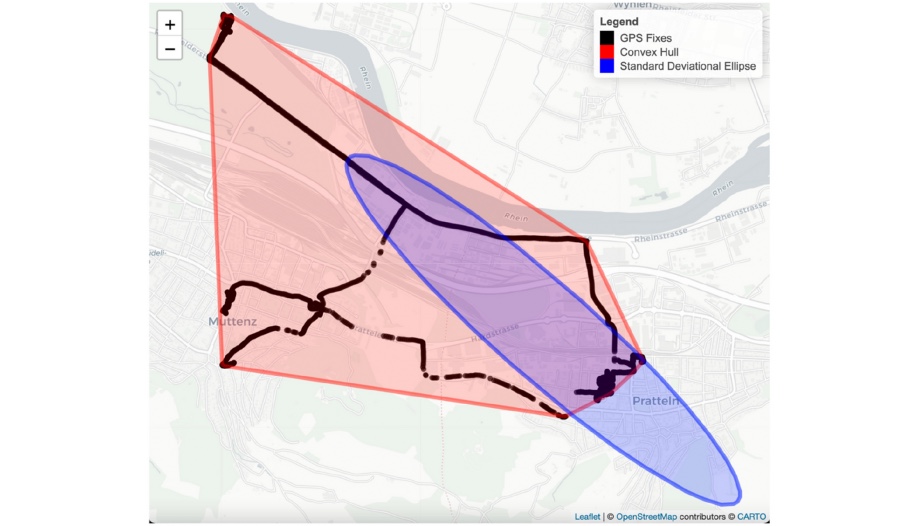New Publication
Timed up-and-go performance is associated with objectively measured life space in patients 3 months after ischemic stroke
Journal of Neurology (2022)

Roland Rössler, Nikki Rommers, Eun-Kyeong Kim, Laura Iendra, Alexander Sofios, Eleftheria Giannouli, Erja Portegijs, Taina Rantanen, Denis Infanger, Stephanie Bridenbaugh, Stefan T. Engelter, Arno Schmidt-Trucksäss, Robert Weibel, Nils Peters & Timo Hinrichs
Abstract
Background
Stroke is a common cause of mobility limitation, including a reduction in life space. Life space is defined as the spatial extent in which a person moves within a specified period of time. We aimed to analyze patients’ objective and self-reported life space and clinical stroke characteristics.
Methods
MOBITEC-Stroke is a prospective observational cohort study addressing poststroke mobility. This cross-sectional analysis refers to 3-month data. Life space was assessed by a portable tracking device (7 consecutive days) and by self-report (Life-Space Assessment; LSA). We analysed the timed up-and-go (TUG) test, stroke severity (National Institutes of Health Stroke Scale; NIHSS), and the level of functional outcome (modified Rankin Scale; mRS) in relation to participants’ objective (distance- and area-related life-space parameters) and self-reported (LSA) life space by multivariable linear regression analyses, adjusted for age, sex, and residential area.
Results
We included 41 patients, mean age 70.7 (SD11.0) years, 29.3% female, NIHSS score 1.76 (SD1.68). We found a positive relationship between TUG performance and maximum distance from home (p = 0.006), convex hull area (i.e. area enclosing all Global Navigation Satellite System [GNSS] fixes, represented as a polygon linking the outermost points; p = 0.009), perimeter of the convex hull area (i.e. total length of the boundary of the convex hull area; p = 0.008), as well as the standard ellipse area (i.e. the two-dimensional ellipse containing approximately 63% of GNSS points; p = 0.023), in multivariable regression analyses.
Conclusion
The TUG, an easily applicable bedside test, seems to be a useful indicator for patients’ life space 3 months poststroke and may be a clinically useful measure to document the motor rehabilitative process.
https://link.springer.com/article/10.1007/s00415-022-11524-x